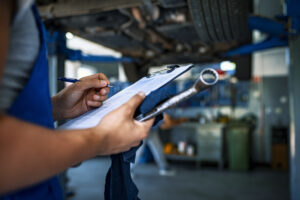
Public workshop: California BAR to cover proposed repaired salvage vehicle regulations
By Lurah Lowery onAssociations | Legal
A second workshop, both in-person and virtually, will be held Thursday at 1 p.m. by the California Bureau of Automotive Repair (BAR) to get feedback from the public on its proposed draft regulations for a new statewide safety inspection program and manual on repaired salvage vehicles.
BAR is required to establish the regulations by Jan. 1, 2024 under AB 471, which was signed into law in October by Gov. Gavin Newsom.
Jack Molodanof, an attorney and lobbyist who represents California Autobody Association on BAR’s Advisory Group, told Repairer Driven News the regulations have “more meat on the bones now.”
“These workshops are very important because it allows the industry — all the stakeholders — to provide input in the direction of this vehicle inspection program,” he said.
Currently, total loss salvaged vehicles in California only undergo brake and lamp inspections, and “in most cases,” smog inspections, according to California Department of Consumer Affairs Public Information Officer Renee Santos. She told RDN the new program will add inspections of other safety components such as windshields, seatbelts, and tires and wheels.
Molodanof said steering and suspension and body structure inspections are also being considered. According to the draft manual, steering and suspension inspections will be both physical and visual and include checks of “all bushings, bearings, ball-type socket joints, arms, rods, struts, bars, subframes, belts, power assist fluids, steering gears, steering columns, shocks, struts, springs, linkages, and steering and/or suspension related sensors, switches, and wiring.”
As for body structure, “a vehicle requiring a safety inspection may have been deemed a total-loss due to severe accident damage, which could have severely altered the shape and structure of the frame and/or unibody,” the draft manual states. “The body structure inspection is visual inspection of the vehicle panels, frame/unibody, fuel system, and other components to identify vehicles that are not structurally sound.”
A road test of each vehicle will also be performed. “A road test is the last portion of the vehicle safety inspection,” the draft manual states. “…A road test may reveal problems or defects that are not readily apparent during the static inspections. The road test inspection shall consist of a stopping test, a visual and functional inspection of the instrument cluster and/or controls, and an evaluation of the control and stability of the vehicle at speed.”
Shops that offer the safety inspections will have to meet licensing and other requirements as will the technicians that conduct them. BAR’s draft manual also covers the types of equipment shops will have to have to conduct the inspections.
“It’s designed to protect the consumer,” Molodanof said. “…They [BAR] want to be able to have a program that’s balanced — that protect the consumer but that doesn’t have so many requirements that nobody can comply.”
According to BAR, “at a minimum, the new program will combine and ultimately replace the Bureau’s current lamp and brake inspection programs.” The state plans to sunset its lamp and brake inspection programs six months after adoption of BAR’s regulations.
A presentation posted on BAR’s website states that the vehicle inspection manual will have nine sections: information on technician access and vehicle identification, lighting system inspection, passenger compartment inspection, tires and wheels inspection, brake system inspection, steering and suspension system inspection, body structure inspection, road test, and equipment requirements.
“In addition to the items in the manual, the vehicle safety inspection will include: a scan of the vehicle’s identifying information, a scan of information related to the vehicle’s safety systems, and a determination of any open safety recalls. A vehicle that fails to communicate when scanned or has an unrepaired safety recall will fail inspection.”
The draft regulations, manual, and a recording of BAR’s April 20 workshop are available here.
IMAGES
Featured image credit: ljubaphoto/iStock
